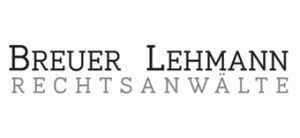The European Parliament brought a new regulation on European Union trade mark law called the Amending Regulation (Regulation EU 2015/2424) which entered into force on 23 March 2016 and started to apply from 1 October 2017.
The Amending Regulation brings us a few novelties. There were some changes in the fields of examination proceedings, absolute grounds, opposition and cancellation, relative grounds and appeals. Also, there were some changes in names. Among others, the name of the Office was changed from “Office for Harmonisation in the Internal Market” to “The European Union Intellectual Property Office” and the name of the trade mark administered by the Office was changed from “Community trade mark” to “The European Union trade mark”. In addition, there were some changes to the fee system for trade marks and some procedural changes as well.
What we found to be the most interesting is the fact that the main areas of change brought by the Amending Regulation are graphical representation and EU certification marks.
The graphical representation requirement is no longer applicable when submitting a trade mark application. This means that, from now on, signs can be represented in any appropriate form. The Amending Regulation clearly states in the ninth paragraph of the Amending Regulation that “a sign should be permitted to be represented in any appropriate form using generally available technology, …, as long as the representation is clear, precise, self-contained, easily accessible, intelligible, durable and objective.” The result of this big change is a system which allows the trade mark entries on the EUTM Register to become more clear, more accessible and easier to search for.
Certification marks are a new kind of trade mark at least on the EU level. There have been already certification marks on the national level. They are defined as a mark that is “…capable of distinguishing goods or services which are certified by the proprietor of the mark in respect of material, mode of manufacture of goods or performance of services, quality, accuracy or other characteristics, with the exception of geographical origin, from goods and services which are not so certified.” (Article 74a(1) of the Amending Regulation). In other words, a EU certification mark guarantees that certain goods and services have specific features. It also indicates that the goods and services that have the certification mark are in accordance with a given standard set out in the regulations of use.
When filing an application for a certification mark, the applicant must include a statement that they are applying for an EU certification mark. Also, since the regulations of use constitute the essence of the certification mark it is important that they are filed within two months of the application. Among other things, these regulations of use need to contain:
- the characteristics of the goods or services applied for certification;
- the conditions under which the certification mark would be used;
- the testing and supervision measures that the certification mark owner would apply;
- the list of goods and services of an EU certification mark applied for.
It is important to stress out that there are two limitations for an EU certification mark:
- A certification mark cannot be owned by a person who is in charge of supply and delivery of the goods and services that are certified. In addition, it is forbidden for the owner of a certification mark to use the mark for the goods or services that are covered by the certification;
- The application for a certification mark cannot be filed for the purpose of distinguishing the geographical origin of the goods or services that are to be certified. Also, certification marks should be applied for the goods and services that will be certified by the owner of the mark.
Source: EUIPO
European Union Trademark Application
If you are interested in applying for a European Union Trademark (EUTM) before EUIPO, please do not hesitate to contact us any time. The European Union Trademark is valid in all Member States of the European Union. It is valid for 10 years with the option an indefinite renewal.
On our website → here ← you may apply directly for a European Union Trademark.
